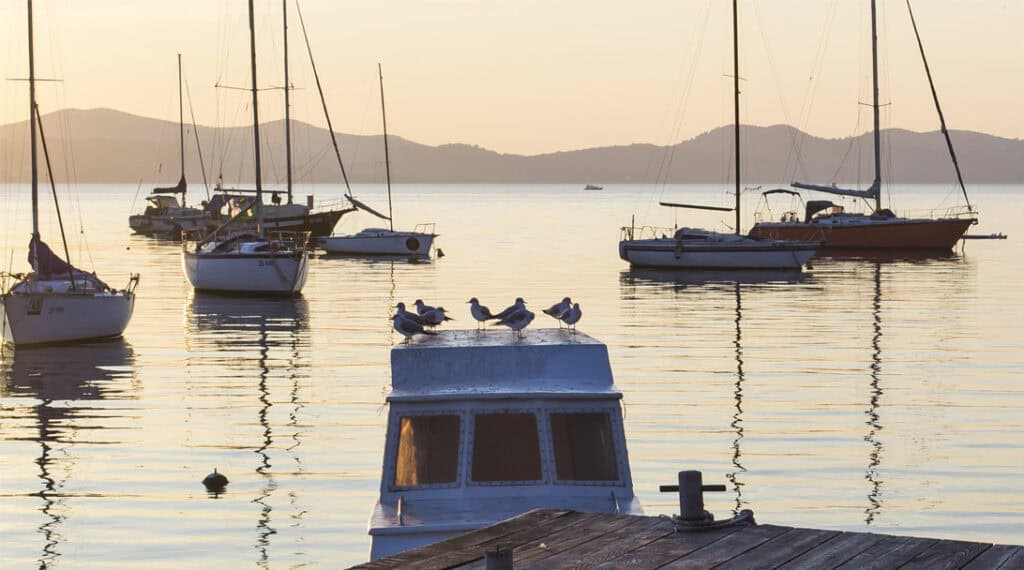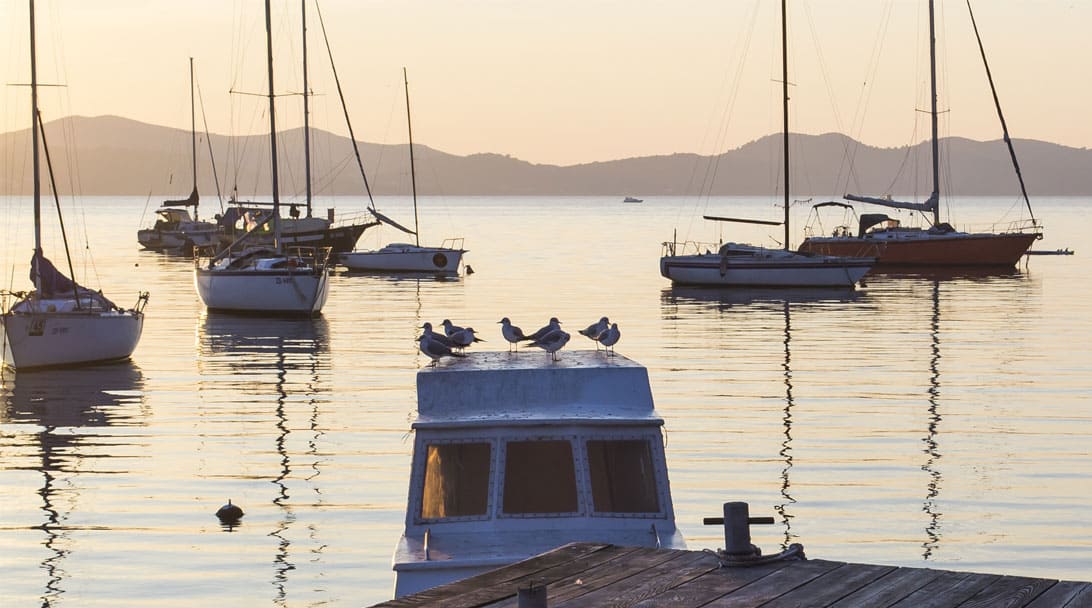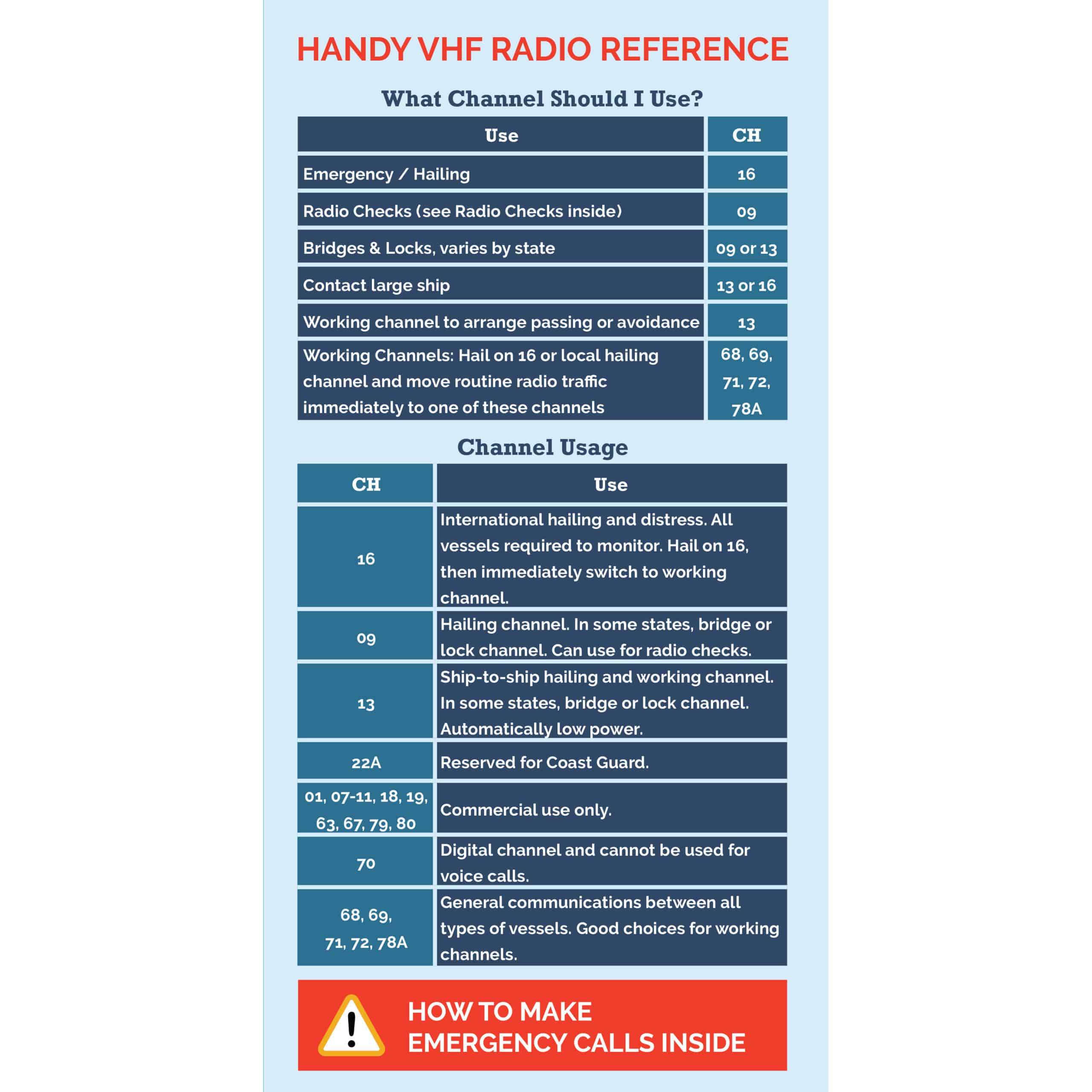Many cruisers have strong opinions about where to use your watermaker. They are often astounded to know that we used our watermaker pretty much anywhere we were.
Open water, harbors, marinas, incoming tide, outgoing tide, even in brackish water. We’ve run ours in all.
Arguments About Where to Use Your Watermaker
I have heard four arguments for not running your watermaker “everywhere:”
- Damage to the membrane,
- Blowing out a membrane in brackish or fresh water
- Quickly clogging prefilters
- Poor output water quality
Let’s look at each of these and why I don’t think they’re a reason to not run a watermaker.
Damage to the Membrane
Petroleum and chlorine in the water are the two big concerns for damaging the watermaker membrane. Chlorine simply isn’t in the “saltwater” and isn’t an issue for whether you run it in a particular area (you should always have a charcoal filter on the fresh water flush line to remove any chlorine that might be in your water tank, whether from city water or you treating your tank water).
Petroleum in the water, from poor engine maintenance or a spill, is possible almost anywhere, but the chances increase as the number of other boats nearby increases.
However, petroleum is lighter than water and will sit on top of the water. That’s why you see a sheen on the water when there is a spill. Most watermaker intakes are at least six inches underwater. Unless the water is extremely stirred up, there just isn’t an appreciable amount of petroleum that far down.
Our rules were:
- Don’t make water when there was a visible petroleum sheen near our boat, and
- Don’t make water when the water is particularly stirred up, either from wind waves or wakes
In 17 years of cruising, with 3 different watermakers, we never had a premature membrane failure.
Blowing out a Membrane
The less salty the water is, the less pressure it will take to make water and using too much pressure can blow out (destroy) a membrane. When we started cruising on the ICW, with varying levels of salt in the water, we added a flow meter to our watermaker “plumbing” and would adjust the pressure so that we were never exceeding the maximum flow rate that the system was designed for.
In the seven years that we were cruising in water with varying salinity, we never had a problem.
Quickly Clogging Prefilters
True, dirty water – as in many harbors, or places with runoff – will clog prefilters fairly quickly. BUT it’s easy to rinse them out and reuse them. We always had two that we’d swap between. When one would clog, we’d take it out and put the other one in. Then we’d loop a line through the dirty one, tie the line to the boat (or hold it tightly), and throw the filter into the water as hard as we could. All sorts of gunk would float out. We’d do it three or four times, until nothing more came out. Then we’d hang the filter to let it dry. We found that a filter could be typically be reused 10 times or more.
Even in the dirtiest areas, a prefilter was good for a week before it had to be cleaned. So it would last for 10 or possibly more weeks. And since the prefilters cost about $10 each, that means we spent about $1 a week on prefilters – in the dirtiest water. Less in cleaner water. But even $1 a week was worth it to us versus carrying water from shore.
All that said, there are some harbors that are horribly filthy.
Poor Output Water Quality
People always worry about the quality of the output water if the source water is contaminated. It’s my understanding that bacteria and viruses are larger than the salt molecules that are rejected in an RO watermaker, and thus won’t be able to pass through the membrane.
We never had any “stomach illness,” infected cuts, or any other problems traced back to our tank water in 17 years of drinking, cooking, showering, and more using RO water that we’d made anywhere.
When Didn’t We Use Our Watermaker?
Twice, we stopped using our watermaker for an extended period: both times, after a hurricane sunk numerous boats in the harbor we were in. The sunken boats leaked a variety of fluids for days – fuel, oil, cleaning supplies, battery acid, and more. The water was also horribly disturbed for a week or more, and there had been tremendous runoff.
We waited until we could no longer smell petroleum, there was no sheen, and the water just plain looked reasonably clear again. In Hurricane Marty, a Category 1 storm, my recollection is that we waited about 10 days before making water. After Hurricane Irma, a Category 4 storm with far more sunken boats where we were, we waited a little over a month. In both cases, we had topped our tanks up before the storm hit, then pickled the watermaker.
In neither case did our watermaker membrane fail prematurely when we began using it again.
Don’t Just Take It From Me
We had three different brands of watermakers over the years – an HRO, a Katadyne, and a Rainman – and we asked each of the manufacturers if we were okay to use them in harbors. All said yes as long as there was no obvious petroleum sheen and stated that the biggest problem would be clogged prefilters.
In further discussion with both the Katadyne and Rainman reps, we were told that the best thing we could do for the health of the watermaker and membranes was to run it frequently; absolutely no less than once a week, and 2 to 4 times a week was even better. Daily use was considered the best.
Bottom Line: It’s not essential to have a watermaker; plenty of boaters do haul water from shore. We found it a wonderful luxury not to have to worry about how much water we had. Don’t get me wrong, we still conserved, but we didn’t have to think about planning our stops with where we could get water. And, as we got older, not having to lift jerry cans of water aboard made continued cruising a little easier!
Flatten the learning curve with practical how-to info that gives you the confidence to step into life aboard.
Start Learning Today

Carolyn Shearlock has lived aboard full-time for 17 years, splitting her time between a Tayana 37 monohull and a Gemini 105 catamaran. She’s cruised over 14,000 miles, from Pacific Mexico and Central America to Florida and the Bahamas, gaining firsthand experience with the joys and challenges of life on the water.
Through The Boat Galley, Carolyn has helped thousands of people explore, prepare for, and enjoy life afloat. She shares her expertise as an instructor at Cruisers University, in leading boating publications, and through her bestselling book, The Boat Galley Cookbook. She is passionate about helping others embark on their liveaboard journey—making life on the water simpler, safer, and more enjoyable.











Leave a Reply